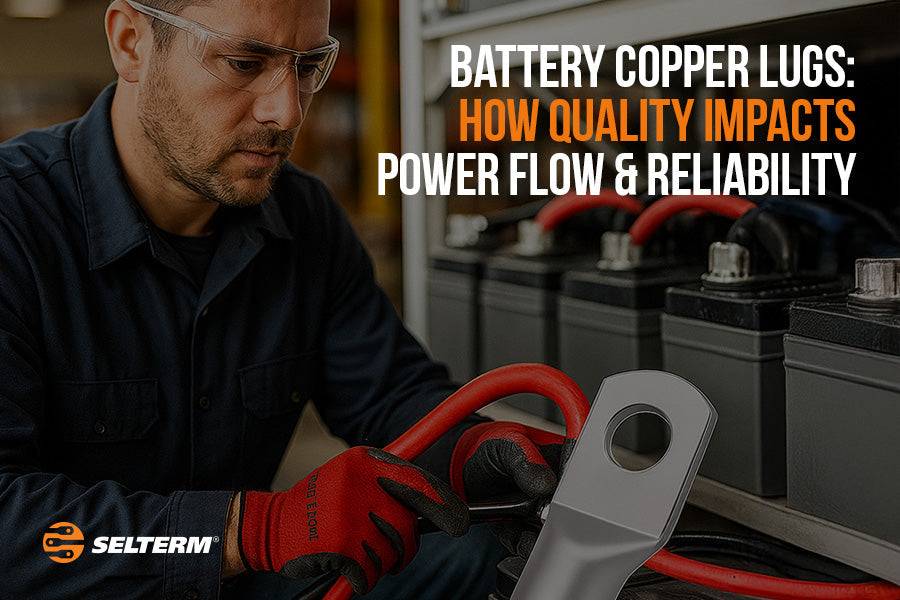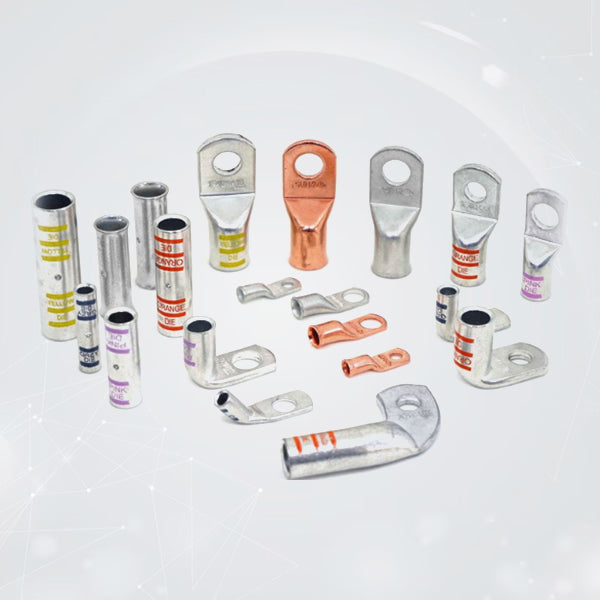
Battery Copper Lugs: How Quality Impacts Power Flow & Reliability
Whenever you are creating or upgrading an electrical system, for example, an RV, Solar bank, golf cart, or a boat, every part has an impact on overall performance. However, one part that is often overlooked? The lugs. More specifically, battery copper lugs. These small connectors are the connections from your power source to everything you are powering, and when they are not top of the line, nothing will perform to the best of its ability.
Think voltage drops, overheating, or worse, complete connection failure. That is why selecting a high-quality lug is more than just a technicality; it is a do-or-die consideration for reliability and safety.
In this blog, we discuss how something as simple as a lug influences everything from power flow to long-term performance, and how choosing heavy duty wire lugs, also known as heavy duty battery lugs or battery copper lugs or bare copper lugs, precision-engineered options make a huge difference.
Why Copper Lugs Matter More Than You Think
It’s easy to focus on batteries, inverters, or solar panels when planning an electrical build. But lugs? Most people don’t give them a second thought until something goes wrong.
Low-quality lugs can lead to:
- Inconsistent current flow
- Overheating and melted insulation
- Corrosion build-up
- Total system failure
That’s why using heavy duty wire lugs, made from high-conductivity copper, isn't just smart, it’s non-negotiable if you care about safety, reliability, and longevity.
What Makes A High-Quality Copper Lug?
Let’s break it down. Not all copper lugs are created equal. Here are the specs and characteristics that matter most:
1. Material Purity
Try to find lugs that are made from 99.9% pure copper. Pure copper gives you the best electrical conductivity, so you can get your system to work at maximum efficiency while minimizing resistance.
2. Tinned vs. Bare
- Tinned copper lugs are coated so they resist corrosion and are great for marine or humid environments.
- Bare copper lugs are good in dry indoor environments, have great conductivity value, and don't cost much.
3. Wall Thickness
Thin-walled lugs will overheat from resistance and suffer from mechanical failure due to flex. Heavy duty battery lugs will have thicker walls, which increase not only performance but crimping strength, which is essential for use in RV's or boats because of their high vibration state.
4. Flared Entry
A flared barrel will allow ease of wire insertion and improve accessibility in tight spots. Also, a flared barrel will minimize a strand of wire from getting loose and causing a short.
5. Properly Sized Stud Holes
Using the right stud hole size prevents unnecessary movement and ensures a tight, secure fit.
How Quality Affects Performance In Real-World Applications
Let’s say you’re wiring your RV’s solar bank. You’ve got expensive lithium batteries, a solid inverter, and top-tier panels, but you used cheap, thin lugs. Now your voltage drops under load, your battery charges inconsistently, and your connections are starting to show signs of corrosion after just a season.
Here’s how high quality battery lugs change the game:
- Stable Power Flow: Premium lugs reduce resistance, which means less voltage loss between your battery and load.
- Heat Dissipation: Thick copper helps distribute heat more efficiently, reducing the risk of thermal buildup.
- Corrosion Resistance: Especially when using tinned options, copper lugs from trusted brands hold up against moisture and saltwater.
- Mechanical Durability: A snug, well-crimped lug holds its connection, even in high-vibration settings like off-road vehicles or boats.
Installation Tips For Maximum Reliability
A great lug only performs if installed correctly. Here’s a few quick tips:
- Strip the wire cleanly without nicking the strands.
- Use a compatible crimping tool, not pliers or the nearest makeshift tool.
- Use heat-shrink tubing after crimping to protect against moisture and wear.
- Check the size of the lug wire and stud to make sure they are compatible before installation.
Taking an extra 5 minutes during installation could save your hours of future troubleshooting.
Heavy Duty Doesn't Mean Overkill
Even if your project isn’t for the "industrial grade" special, there is no harm in making battery connections heavy duty under any circumstance. Let’s face it, the battery connection is where the current is handled. Any weakness in this area becomes a liability to the entire system.
No matter if you are wiring up your latest weekend DIY solar project, fixing up your golf cart, or building a battery backup system for your off-grid cabin, good quality lugs aren’t optional - they are required.
Why Selterm?
Selterm’s bare copper lugs are precision-engineered for serious performance. With UL certification, consistent manufacturing quality, and a variety of sizes, they’re a go-to for DIYers and pros alike. And since they're available online with detailed specs and easy filtering options, you won’t have to guess what you’re getting.
Final Thoughts
In any electrical system, your power is only as reliable as your weakest connection. Don’t let cheap components hold you back! Quality battery copper lugs, such as Selterm’s heavy duty battery lugs will get you better conductivity, stronger crimping, and peace of mind while powering the lights on a boat, RV or backyard solar project.
Explore the full range of bare copper lugs and give your setup the strong foundation it deserves.

